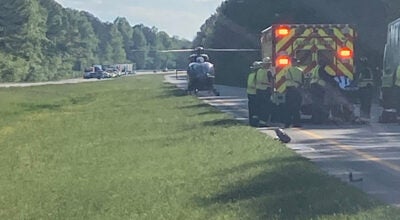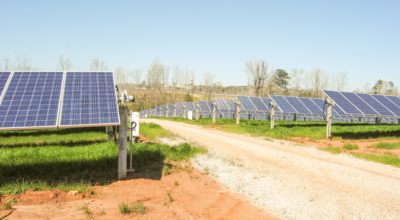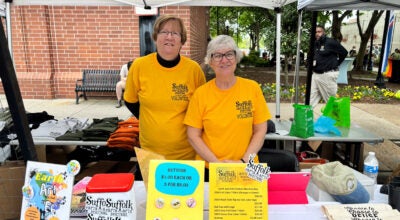Lone Star’s longleaf comeback
Published 8:39 pm Saturday, May 23, 2015

J.R. Ruggiero, a Suffolk Parks and Recreation park ranger at Lone Star Lakes Park, examines a longleaf pine tree seedling planted earlier this year in a field at the park. Ruggiero and others are trying to re-establish a stand of the historically significant trees, which were nearly gone from Virginia.
Among pines, the longleaf is distinguished.
Trees used for telephone poles are the most valuable in the woods, according to Scott Bachman, and more of those are longleaf than any other southern yellow pine.
But its strength has also been its weakness.
Since Europeans arrived, longleaf in Virginia has been felled almost into oblivion, from a million acres down to “probably less than 1,000 mature trees,” the senior area forester says.
While state and federal authorities have been working to reestablish more longleaf for some time, the city of Suffolk has recently stepped up to establish what’s believed will be the state’s largest municipal stand of native longleaf.
According to ranger J.R. Ruggiero, a contractor planted the 13 acres at Lone Star Lakes Park in Chuckatuck in November – 6,800 trees in five hours.
“It’s one of the best native trees – it was just really cool to bring them back to a park setting,” said Ruggiero, adding the project was funded with a Virginia Trees for Clean Water matching grant.
“I’m really excited to see them grow in the next couple of years.”
The seedlings were grown from cones collected from longleaf at South Quay, a Virginia Department of Conservation and Recreation preserve in Suffolk’s southwest corner.
Bachman said state foresters like him also have been trying to create a longleaf nursery by grafting from this mature stand plus a few others scattered around the commonwealth.
It’s finicky: He said they graft a pencil-sized piece of branch onto a piece of root about the same size, and cones are thus tricked into production.
Billy Apperson, a forester who retired in 2012 after 50 years with the state department, honed the procedure. In 2013, a Virginia Senate Joint Resolution commended his groundbreaking work.
While it’s easy to graft loblolly, longleaf would mostly die, Bachman said – until Apperson “figured it out.”
Home to Virginia’s largest remaining natural stand of longleaf, South Quay is important. Paper and pulp manufacturer Union Camp, which owned it, didn’t harvest the trees, because they were next to a wastewater treatment plant it wanted to protect, Bachman said.
In previous centuries, colonial American and English navies sought the longleaf’s straight trunks as masts. It also was prized in shipbuilding for the tar and pitch, known as naval stores, distilled from the wood using kilns dug into earth.
Pitchkettle Road points to that as an early industry in Suffolk, Bachman said, as do the Tar Heels in North Carolina.
Efforts to reestablish longleaf in Suffolk are important, Bachman said, because it’s on the northern edge of the species’ historical native homeland. According to The Nature Conservancy, that native area tracked the coastal plain from eastern Texas around and into Virginia.
“Any time you are on the edge of a population, you are very special,” Bachman said. “That makes the trees in Suffolk kind of important.”
The Lone Star Lakes longleaf won’t soar to heights of up 150 feet for a few years yet — while loblolly grow to 12 feet tall in five years, Bachman said, longleaf can still be in the grass stage.
That’s made longleaf less desirable for private landowners, but “once longleaf pines are ready to go up out of the ground, it’s a very fast-growing tree,” Bachman added.
Attending a Longleaf Alliance class in Alabama, Bachman asked how the cold affected longleaf, wanting to get a better idea about the best time of the year to plant them.
They told him they didn’t know, he said, because it doesn’t get that cold in Alabama. That gave Bachman an idea.
It gets colder in Suffolk than any other part of the longleaf homeland, so they’ve set aside an area at Lone Star Lakes to plant a batch every month and monitor the results.
“This is the first year of the project,” Bachman said. “It may not be academic research, but I really think this could be one of the more important projects, outside learning how to graft them.”






